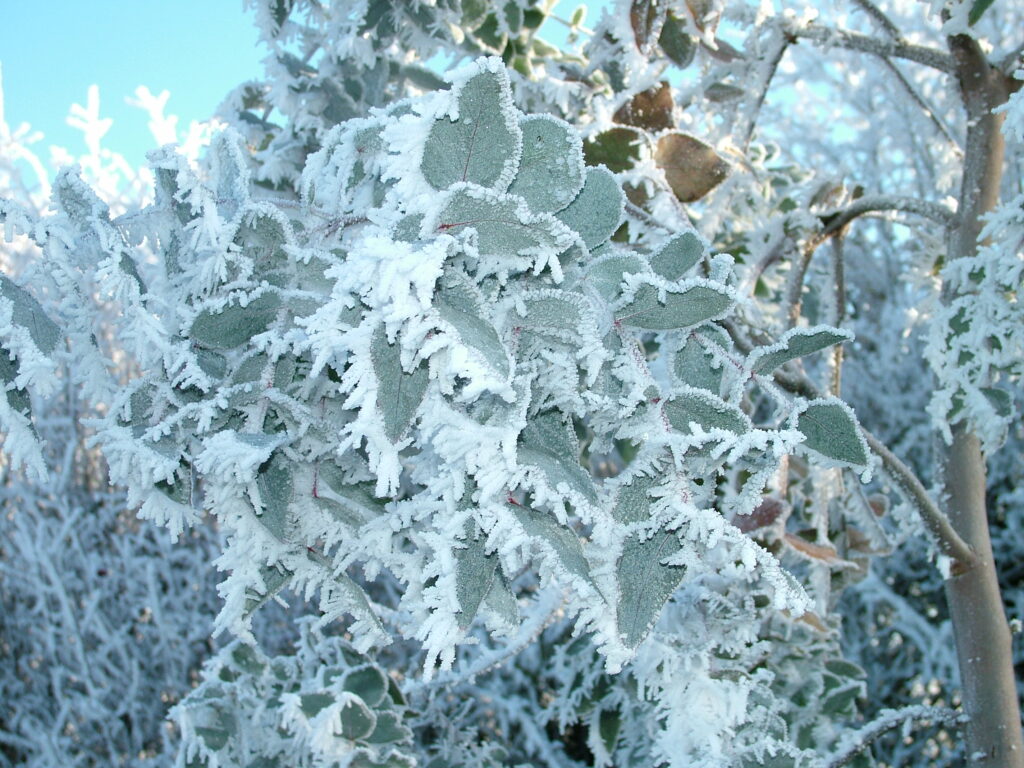
Summary of this article:
What is Hardiness in plants – how does it all work? We shed some light on the subject
Of the 800+ species of Eucalyptus, several are sufficiently hardy to cope with an average British winter once established.
Some species of Eucalyptus are hardier than others.
Selecting the right species is key to the Eucalyptus surviving in your microclimate, but how you treat it thereafter, along with the tree attaining age and gaining collateral, will determine its overall, long-term success. The older a Eucalyptus, the hardier it becomes: we explain why.
Understanding Eucalyptus biology and what you can do to help your tree prepare itself for winter, along with alleviating some of the environmental stressors, can significantly help your tree survive extreme weather. We explain the triggers Eucalyptus require to move from ‘summer mode’ to ‘winter mode’ and how you can help.
There are many abiotic stresses to be endured by Eucalypts and plants in general. These are listed at the end of this article.
There is and always has been a risk to growing trees and shrubs of Mediterranean and Antipodean origin in the UK; this is nothing new. Erratic fluctuations in winter temperatures are here to stay; some winters will be warmer or colder than others and there will be the occasional loss. Seasoned gardeners have come to accept this. This is Gardening 101
Short Answer: yes, some of them are – which is what everybody wants to hear, but the truthful answer is yes, but only if you tick all the boxes.
But first we need to answer a different question. What is hardiness? What does it mean?
Frequently asked Questions: Is Eucalyptus hardy? Is Eucalyptus winter hardy? Is Eucalyptus a hardy plant? How hardy is eucalyptus? How hardy are eucalyptus trees? Is Eucalyptus frost hardy? Are Eucalyptus hardy in UK?
According to the RHS:
Hardiness Rating H4 is hardy within temperature range -5°C down to -10°C
Category: Hardy for an average UK winter
Definition: Hardy through most of the UK apart from inland valleys, at altitude and central/northerly locations. May suffer foliage damage and stem dieback in harsh winters in cold gardens. Some normally hardy plants may not survive long wet winters in heavy or poorly drained soil. Plants in pots are more vulnerable to harsh winters, particularly evergreens and many bulbs. (Many herbaceous and woody plants, winter brassicas, leeks).
Ref: https://www.rhs.org.uk/plants/trials-awards/award-of-garden-merit/rhs-hardiness-rating 2012_RHS-Hardiness-Rating.pdf
The RHS chart goes on to further discuss Hardiness Ratings H5 (-10°C down to -15°C), H6 (-15°C down to -20°C) and H7 (lower than -20°C)
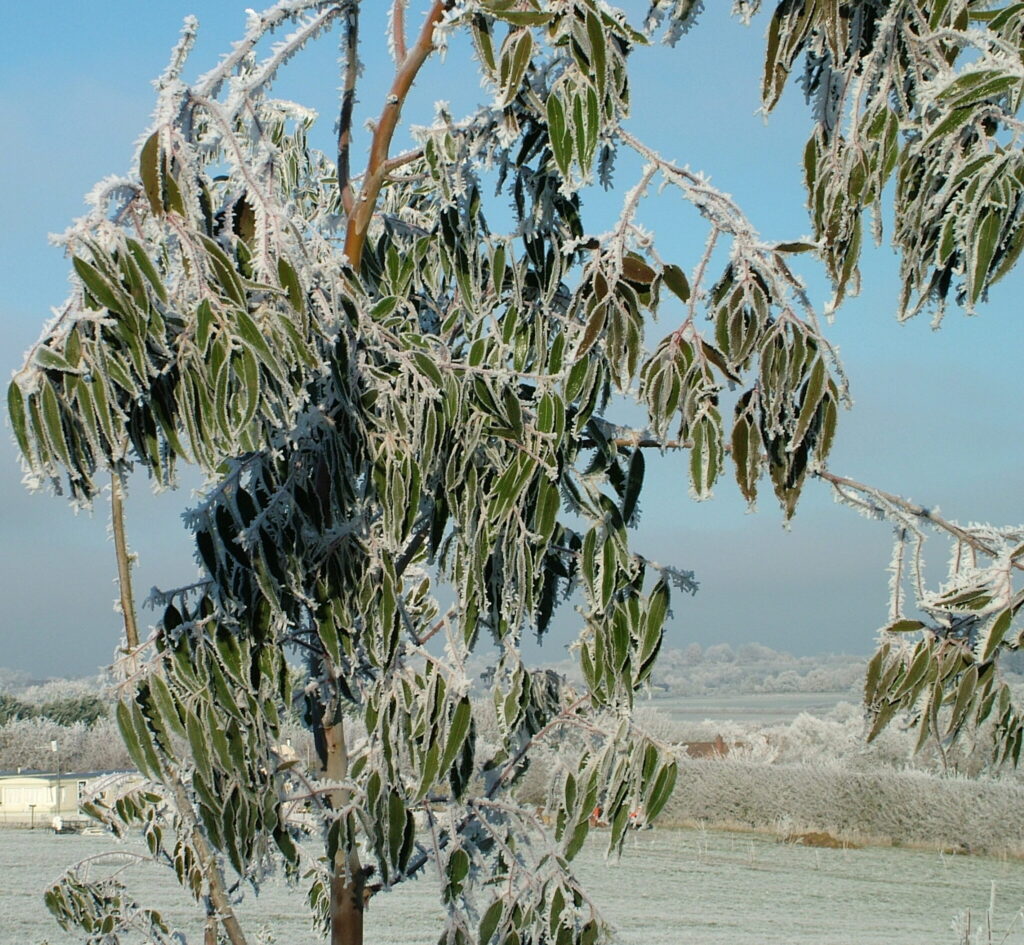
To be clear, hardiness does not mean that A. plant (enter name of your choice here), if given the title ‘Hardy’, will take any weather that the British Winter wishes to throw at it, without reference to temperatures and moisture levels, microclimate, stress levels, provenance and the age of the plant.
The Eucalyptus dalrympleana on the left is coated in hoar frost during the winter of 2011. It has since grown into a very handsome specimen.
To say Eucalyptus are sufficiently hardy or not hardy for the UK is unqualified; it is meaningless when stated out of context
Nor is it simply a matter of choosing the right species, say Eucalyptus glaucescens, which can be hardy down to -18°C. Simply plumping for E. glaucescens and hoping for the best or thinking you are sorted is not going to work either.
Plant Hardiness is not binary. It is not an on / off switch. It is not guaranteed
Hardiness in plants is more of a sliding scale, like the volume on your television with a mixer of treble and bass.
A Eucalypt’s response to frost or freezing conditions i.e. whether it becomes frost-damaged or not, depends on multiple factors
Plants that we know to be generally hardy in winter are not always hardy in summer, when they are actively growing. If you had some roses in mid-July, full of open blooms with masses of fresh bronzy young leaves and there was an overnight temperature dip to -15°C you would be surprised, but not be surprised if they all went black. However, roses are usually as tough as nails in a standard British winter, because they have been able to prepare themselves properly.

A short detour for a moment to explain what I mean by a trigger. Why do plants do what they do? More specifically for example, how do Oak trees know when to leaf out after winter? How does a rose know when to flower? How to apple trees know when to start producing fruit?
The answer to these seemingly simplistic questions is all down to environmental triggers and complicated biochemistry; the latter of which we won’t visit in this article! The precise nature of a trigger is specific to a plant genus and species, and depends on what the plant is required to do. For instance, an Oak tree (Quercus robur) leafs out after accumulating ‘so many’ growing degree days. i.e. how many degrees temperature it accumulates over a minimum temperature for however many days. So the trigger for when an Oak tree leafs out is initiated by temperature, whereas an Ash tree (Fraxinus excelsior) is more heavily influenced by day length hours. The Ash will leaf out when the day length in Spring gets to ‘so many hours’.
From pruning a dormant rose in the Spring, to when it begins to flower is twelve weeks of growing from when growth begins. I could not easily find the information on the precise trigger to initiate a rose to begin growing after winter; it may be temperature or daylength or a combination of both. However I do remember a lecture by a professional rose grower, a Mr Sanders, telling us that a rose grows precisely for 12 weeks after Spring pruning and then it flowers, no matter how hard or not it was pruned.
It’s long been known that flowering and subsequent fruit production in plants is a response to stress. If you want to bring a young apple orchard into cropping after a few years of establishment, you grass it down. The grass is an environmental stressor and trigger, which has first call on rainfall and nitrogenous fertilisers. With reduced access to these, the apple tree ‘thinks’ that food and water have become scarce local commodities and therefore it needs to reproduce, to ensure survival of its type. Similarly, you would not grass down a newly planted orchard as this could quite easily lead to tree establishment failure. Newly planted apple trees needs to establish good root systems in the absence of aggressive grass and weeds.

Indulge me, if you will, with an analogy.
This is Bob. He likes to garden.
Here he is dressed for the British Summer Weather – shorts, sandals, cool drink in hand.
Hold that image – we’ll return to Bob in a minute.
For Oak trees (Quercus robur) the routine is well defined
They can then take anything a normal British winter throws at them.
But as discussed above, oaks need the correct trigger – something to tell them when to flick the switch to start the process of going dormant, of becoming winter hardened.
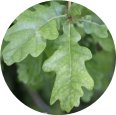

Here is Bob again, now dressed for the Great British Winter
The trigger for Bob to shift from summer mode to winter mode is when his wife tells him its cold outside and the process is for him to put on his coat and boots.
For other plants, such as Scots Pine (Pinus sylvestris), their trigger is shortening day length and the process to become hardy is a period of cooling and chilling.
Just 6 frosts of only -4°C, over 1 month in the autumn and that pine will be tolerant of an unbelievably cold -32°C.
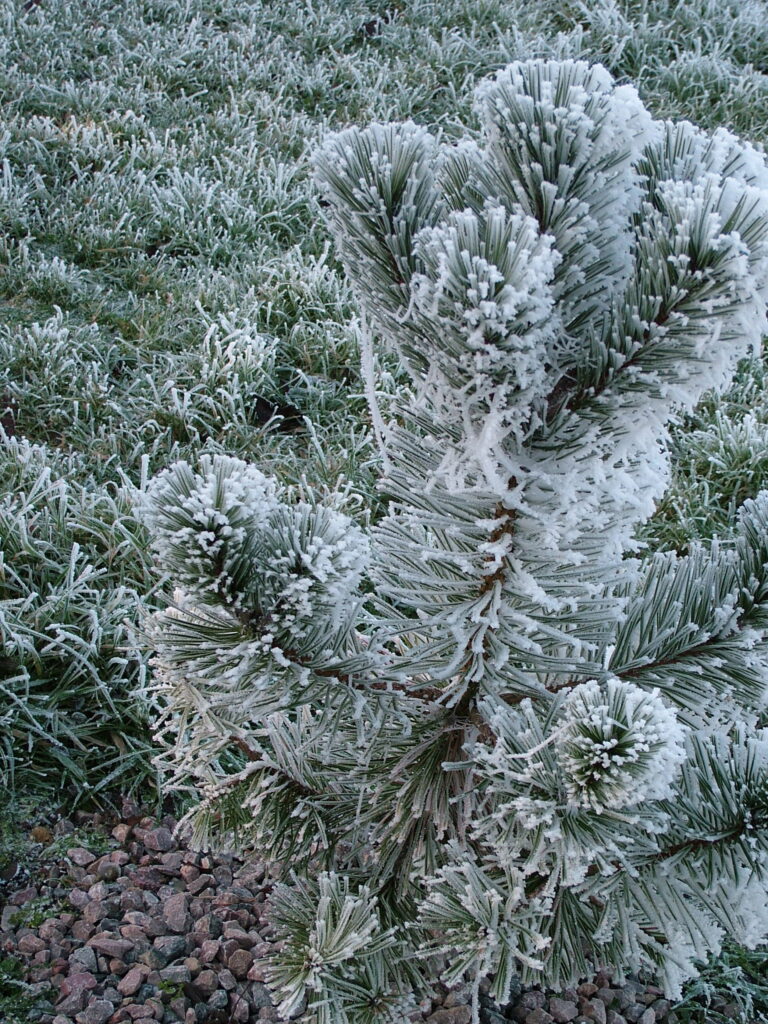
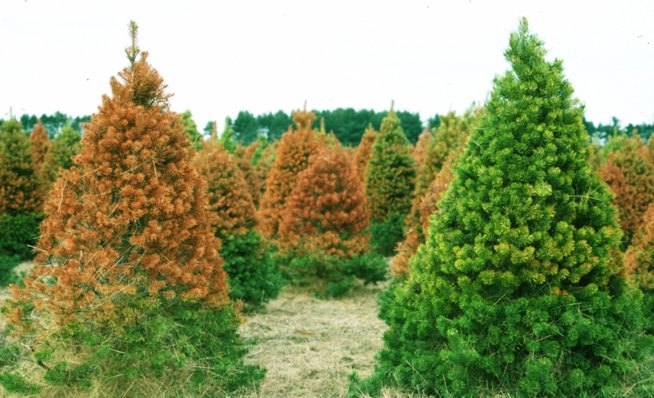
Hardy until a period of warm weather dehardened their foliage and branches. These pine trees became damaged after a sharp radiation frost.
The reverse of this process is called dehardening and it can be very rapid; it can occur when the daytime temperature rises above +10°C. It took only a week at these warmer temperatures for the pine trees to become susceptible to frost damage.
Once the trees have become ‘dehardened’, it will take only one brief cold snap at sub-zero temperatures for the pine trees to be severely scorched and even killed, as in this photograph on the left.
If only hardiness were this simple with Eucalypts, but it’s a bit more complicated.
There are well over 800 species of Eucalyptus and with the exception of 2 or 3 species, all of them originate from specifically Australia, Tasmania and New Zealand. Those that grow in the north and west of Australia are generally considered only suitable for warm climates or glass house culture in the UK. They are not of hardy provenance.
At Hardy Eucalyptus, we focus on species that hail from south-eastern Australia, New Zealand and Tasmania; sourcing our seed, where possible from frosty valley bottoms, mountain ranges and high-altitude locations. Provenance is king.
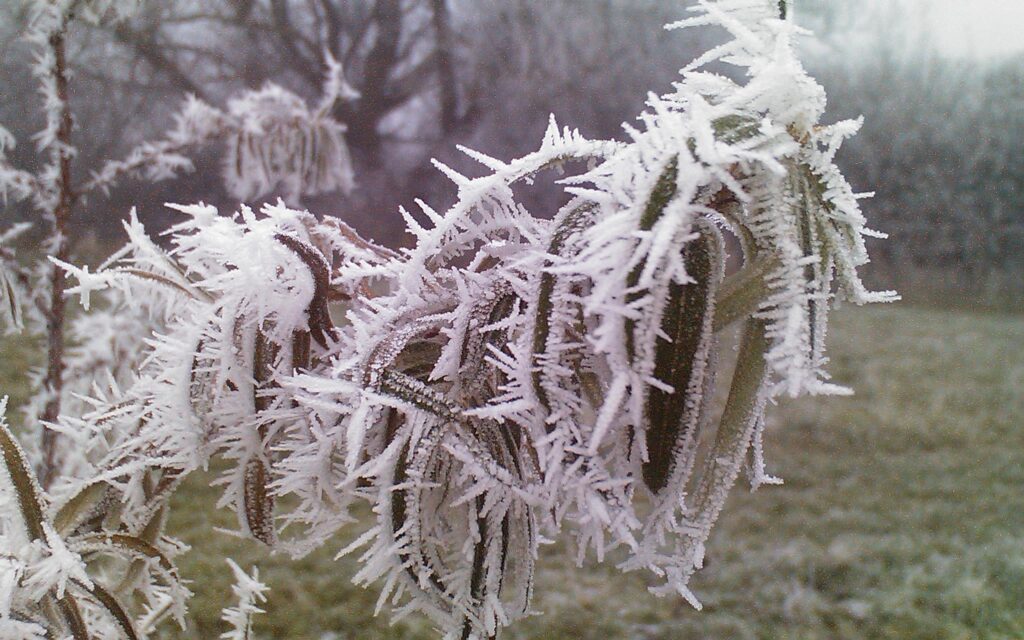
No Eucalyptus go dormant; not as we understand it in Britain. They don’t stop growing; nor metaphorically go to sleep by shutting down their root system and forming a terminal bud up top, like an oak tree.
At Grafton Nursery, we have found that, when the temp is above +5°C, Eucalypts grow. The warmer the temperature, the faster they grow. You should see what growth can be achieved within only 4 summer months by a Eucalyptus globulus bicostata at +20°C with unlimited food and water! Over 4 metres!
At best, when the temperatures fall consistently below +5°C, Eucalyptus go into ‘suspended animation’. They are sitting there quietly, with their engine idling, just waiting for the traffic lights to turn green again. The minute temperatures consistently rise to +5°C, they accelerate hard, growing in the fast lane of life!
However, even if you have selected the correct species and provenance for your microclimate, if the Eucalypt has not received the correct triggers and therefore been able to go through the hardening process and ripen its wood for winter properly, it will not cope with the cold.
Back to my little analogy.
Bruce is Bob’s friend. He’s newly arrived in the UK, on holiday from Oz. He’s been enjoying the unnaturally warm weather of November 2022 and thinks this is going to continue for the next few months. Unfortunately for Bruce, he’s not received the same trigger as Bob and is completely unprepared for what’s going to happen in December. He’s in for a nasty shock!
Choosing Eucalyptus that are hardy for your garden or plantation microclimate in a standard British Winter is important, but it is only part of the story – way less than 25% the story. Well over 75% of the story is about how these trees are treated by the gardener or grower.
Our research, at Grafton Nursery, shows that how Eucalypts are deployed and treated thereafter governs how successful and hardy they will be in their garden or plantation setting. Some of that will be in the lap of the gods, like weather, so more of that later. How well the Eucalyptus handles that weather can also be down to you, the Grower.

(25% plant genetics + 75% how the Grower treats their Eucalyptus) x C = Eucalyptus Hardiness
Where C = weather conditions
So let’s get down to the nitty gritty:-
We are assuming that you are growing your Eucalypts in the ground*. You will need to take the following into consideration:
If growing in a container, your Eucalyptus will require winter protection in some form. Its root system will be above ground and therefore not afforded the protection offered by warmer soil in the ground. Over-winter your tree into an un-heated greenhouse. Ensure there is good ventilation. Left outdoors, you will have to wrap the pot. Further information can be found on our website under ‘Protecting your Eucalypt over Winter’.
*Raised planters are different in that the soil level is higher than the surrounding topography and will be subjected to sub-zero temperatures. Careful consideration needs to be given to growing in raised planters and there must be an acceptance of the degree of risk this scenario poses for young or unestablished trees.
1. Site assessment and choosing the correct Eucalyptus species
You know your garden better than anyone. You are familiar with where it floods in winter, what spots get the most sun, where the frost hangs in winter. You can assess soil type, pH, rain fall and wind tunnels. Is your garden coastal, high on a hill or in a frosty valley bottom? All of this is valuable data when choosing your Euc. We have written extensively on the subject and you can find these notes here: where to plant
Every Eucalyptus species listed on our website has extensive notes showing its biometric data and microclimate preferences, to help with the selection process. There are 4 tabs to each species, each one discussing different aspects of that species potential uses, likes and dislikes. All of our hardy species our grown from seed sourced from as hardier provenance as we can find. Not necessarily so for the ubiquitous Eucalypt found lurking in the dark recesses of odd retail outlets. If the nursery producing these specimens has simply purchased generic Eucalyptus seed on unknown provenance, the hardiness of these trees will be questionable.
2. Set up is so important
There are gardeners and horticultural professionals, who have unwittingly missed or chosen to ignore the Eucalyptus Rules of Engagement. You cannot do this and hope to get away with it all the time. A beloved but malnutritic rose may pathetically limp along chucking out the odd occasional bloom. A pot-bound supermarket tomato plant will valiantly yield a tiny fruit or two, in spite of you never potting it on. Not so a Eucalyptus. It is like a race horse requiring careful handling and stabling. Treated well it will grow like the clappers 😊. Break the rules and the Eucalyptus will fail to establish ☹.
You can find our full guidance notes on How to plant a Eucalyptus here
Our planting guidance notes are lengthy, but practical and designed to give your tree the best possible chance to succeed for the next 20, 30 or 50+ years! So it’s worth making an effort.
We know these guidance notes work. 100’s of people have followed them successfully with impressive results.
Don’t stress me out! A Eucalyptus that is stressed by abiotic factors, i.e. non-disease related environmental stressors and biotic stressors such as fungal attack, is more susceptible to frost damage.
Three key takeaways from the planting instructions pertaining to hardiness.
3. Aftercare tactics to help your tree prepare for winter
The above may seem like a lot of faff, but every plant species has its own special rituals – just look at what goes into producing a tomato!
4. The British climate and accepting risk
How do you plan for hardiness? In the first instance, you need to know about the biology of a Eucalyptus and the changes it makes to its structure throughout the year. Then it is a question of doing everything in your power to provide the best growing conditions possible as laid out in this article, to help your plant achieve its goals. Finally, it must be taken into consideration that there is and always has been a risk to growing trees and shrubs of Mediterranean and Antipodean origin in the UK; this is nothing new.
Erratic fluctuations in winter temperatures are the order of the day. Remember the winter of 1947 where dynamite was used to extract parsnips from the ground or even worse the winter of 1963, the coldest since 1740 (I don’t recall that one!), where temperatures plummeted to below -20°C? In more recent memory the winter of 2009/2010 was a cruel one.
However, it is not the cold alone that can inflict damage. It is periods of warm weather immediately before the icy blasts that in-fact does the damage. Short bursts of warm weather for only a week can create havoc for plants trying to prepare themselves for or remain in winter-mode. If they suffer damage as a result of the arctic conditions subsequently, it does not mean that the plant is not ‘hardy’ as per the RHS definition above. Is simply means that the plant was not given an opportunity to harden its tissues in time to face the onslaught of sub-zero temperatures. The ‘trigger’ arrives too late for the plants to act and initiate the hardening ‘process’.
Battle-hardened gardeners have learned to accept the unpredictable outcomes of erratic weather. It’s acceptance or they have to be prepared to be disappointed every so often. This is Gardening 101.
We’ll start at the end of the year; October 31st, Samhain or Summer’s End as in the Celtic calendar. Your Eucalyptus has had a good summer; been well fed, had plenty of water and isn’t at all stressed. From July to the end of September, it has been growing very rapidly, shooting skywards, throwing out spaghetti-like-stems without a care in the world for storing food or laying down fibre. It’s been having a blast😊
But now we are at the end of October. Day length is significantly shorter and very specifically the night time temperatures should be regularly hitting +5°C or less. This is the trigger for your Eucalypt to begin the process of preparing for winter hardiness.
This is the process your Eucalyptus needs to undergo to become winter hardy:
And so your Euc is ready to take on sub-zero temperatures down to -4°C for sure. As the tree ages and acquires a thicker overcoat (bark) and lays down more fibre (a fatter trunk), its ability to tolerate lower temperatures will increase until it reaches its genetic limit. For some species, such as E. kitsoniana and E. saxatilis this may only be around -8°C. E. dalrympleana is good to around -12 to -14°C once mature. E glaucescens provenance ‘Tinderry’ will ultimately tolerate down to -14 to -16°C in maturity whilst E glaucescens provenance ‘Guthega’ is good to -16 to -18°C once mature. Snow Gums are even hardier.
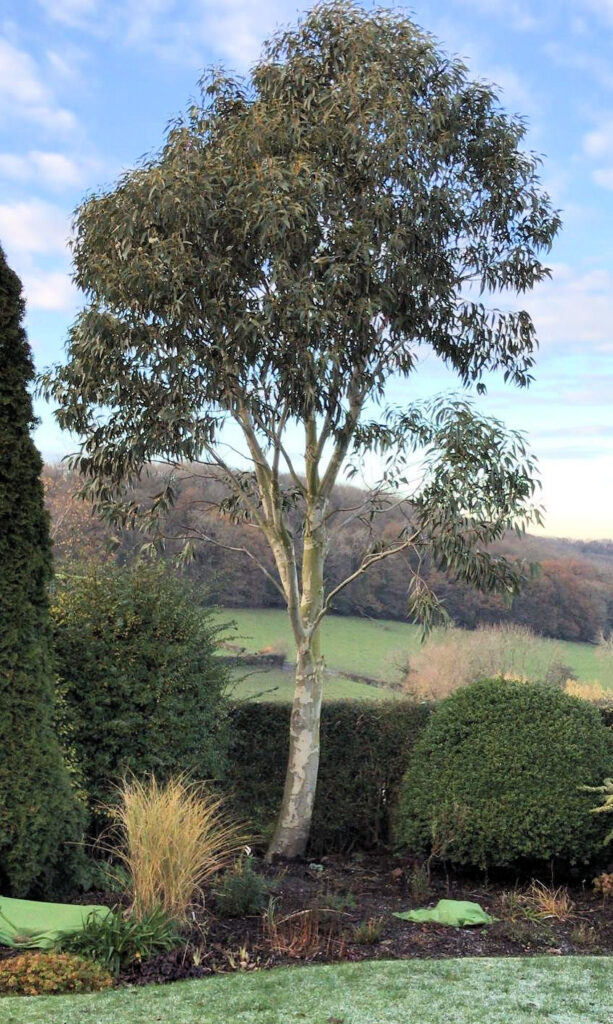
The hardiest of all Eucalypts being the magnificent and beautiful Jounama Snow Gum, impossibly named as E. pauciflora subsp. debeuzevillei provenance ‘Mt Selwyn’. We just call them ‘Debbies’
Provided the temperatures throughout November, December, January and February remain constantly on the cooler side, with night time temperatures hovering around +5 to -4°C both Eucalypts (and Hilary) will be happy. They will remain ‘inactive’, quietly respiring but not breaking into a trot.
This is exactly what happened in the winter of 2022/2023. Certainly, for Worcestershire and for many parts of lowland UK, notably Kent, temperatures during October and November were stupidly warm with a couple of weeks registering +10°C at night time, and rising to well over +12°C during the day. These unusually warm conditions are what initiated the damage to Eucalyptus across the UK, not the sub-zero temperatures later in the winter. The trees didn’t receive the ‘trigger’ to begin the process of hardening for winter.
No trigger = No ripening of wood for Winter = damaged trees during sub-zero temperatures
Many Mediterranean and Antipodean plants that were not in protective custody, but planted out in gardens were still having a ball. Our friend Bruce (above), along with Olive and Bay were, metaphorically speaking, still sunbathing in Hawaiian shirts and thongs, completely oblivious to the arctic blasts that were about to hit them at the beginning of December.
When the cold weather finally came in with a vengeance, it was so rapid that many plants did not have time to switch their biological constitution. Worcester had -13°C. Parts of Kent received -17°C. If plants survived this first short sharp shock of icy weather, they were given what seemed to be a reprieve around Christmas time with balmy conditions again. But this was a double whammy.
Any plants which had managed to harden up during early December became confused during the late December temperature rise. They thought it was Spring and went right on to de-harden their tissues; only to be hit by sub-zero temperatures again for January and parts of February – alternating warm and cold over a very long time. Icy conditions hung around for weeks at the ends of sloping gardens in England and frost lurked across large flat plateaux in Scotland. As the days dragged on, the cold needled its way into the stems and trunks of many trees and plants, icy draughts sweeping around the ankles of young and newly planted stock, and seeping into the ground. Positively Dickensian ☹
To be clear: For Eucalyptus trees to be sufficiently well prepared to take on the icy conditions of a cold British Winter, their tissues need to be hardened or ripened. They need to experience the correct chilling trigger and undergo a series of nights at no more than +5°C, most likely for 2 weeks or more. Typically this process happens in October and November. If they do not experience this cold trigger to initiate the process, they will not be able to cope with a cold spell during the winter and will most likely suffer scorch and dieback, as happened in the Winter of 2022/2023.
Eucalyptus plantation growers, living at higher altitudes as in Yorkshire, experienced typical cooler weather during November 2022 and also enjoyed good frost drainage. Their Eucalypts received the correct triggers, ripened properly for winter and consequently suffered no damage whatsoever in spite of the icy conditions that followed.
The weird thing we noticed across the UK, during the first half of 2023, is that the plants’ foliage took a long time to turn brown. The leaf tissue must have been damaged during the winter, but behaved like cut foliage. The leaves remained green for several months into the Spring, only to finally turn brown and crispy as the temperatures rose substantially in April and May.
At the nursery, we have many trees planted in the ground. Of the hardier species E. glaucescens ’Guthega’, E. parvula, E. neglecta, E. nicholii displayed no damage at all. It wasn’t until late Spring that an odd solitary spindly branch at the top of the trees turned brown. However, our very exposed E. nicholii did ultimately turn brown at the top and leafed out profusely all the way up the trunk. By early Summer we could see that those species such as E. urnigera and E. stellulata, that were sitting in serious frost pockets, had suffered quite markedly and turned totally brown, only then to exuberantly sprout new shoots off their trunks and lignotubers.
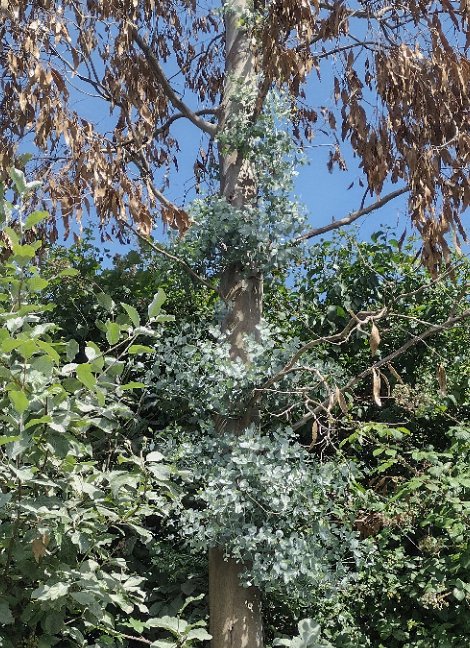
On a positive note, there are plenty of large and very mature Eucalypts across the UK. Champion trees planted as far back as 1950’s that are still thriving today. There are magnificent E. dalrympleana and E. johnstonii at the Hillier arboretum with girth of around 2.5m and 120+ft tall, planted circa 1955. Several champion trees can be found at Kilmun in Scotland, Markshall Estate and Marwood Hill Gardens, Barnstaple, to name but a few.
Whilst weird winters usually only happen about one year in 11, the last one being the winter of 2010, erratic weather may well become the norm in the wake of climate change. In the November of 2009, there was thankfully cold weather, hardening for winter did take place and many Eucalyptus survived largely unscathed.
Once we arrive at March the process of de-hardening will begin. Temperatures are rising and daylength increases.
Eucalyptus are stepping on the gas and ready to grow. They convert their frost-resistant, sugary thick soup into watery sap and roots fire up to push out early growth in April.
It is at this moment that they are most vulnerable. They have dropped their winter defences and any sharp radiation frosts occurring between March and end of May could cause significant damage to the no-longer-hardened Eucalypt.
Having said that, we’ve had some vicious spring radiation frosts at Grafton, which killed cherry trees but not the Eucalyptus.
All being well, the Eucalyptus will start into growth. Any hard pruning, pollarding or coppicing needs to occur before growth substantially begins, otherwise the tree risks becoming exhausted if new growth is pruned off late in April.
Should the Spring weather turn cold again with night time temperatures dropping to around +5°C, the Eucalyptus can still harden and slide back into suspended animation. When the weather warms, the Eucalyptus de-hardens again.
De-hardening can happen at any stage during the winter if the UK experiences strange weather patterns with warmer than usual temperatures. During late December 2022, the temperatures rose well above the national seasonal average to a balmy 11-12°C in some parts. Great for the central heating bills; not so good for Eucalypts. They de-hardened within a matter of days. If this warm spell is followed quickly by a sharp drop to sub-zero temperatures and arctic winds, the Eucalypts incur cell damage, because they will not have had sufficient time to harden up their tissues again to fend off the cold conditions. This is what happened in January and March of 2023 and explains why so many young, newly planted or stressed Eucalyptus suffered damage that winter.
The genetic limit of low temperature tolerance in Eucalypts can only be reached as the tree moves from the juvenile phase into maturity AND this needs to be combined with a tree that is free from stress. We all occasionally suffer stressful conditions in our lives and as you know, your health can suffer, you are distracted from the tasks at hand and you take your eye off the ball; not to mention a complete sense of humour failure! So it is with Eucalyptus.
If your trees are endeavouring to harden tissues for winter and are dealing with one or more of the stress factors listed below, chances are they will not perform well through a cold winter. You will be able to ameliorate some of these stressors through taking appropriate action, but some of those listed below simply require the passage of time.
By the way – these conditions not only affect Eucalypts; these conditions can apply to all plants, but especially those hailing from the Mediterranean or Antipodean parts of the world. In particular Hebe, Laurus nobilis (Bay), Olive trees, Abelia, Ceanothus, Cistus, Lavender, Rosemary, to name but a few. What a scary thought! The list below is extensive but not necessarily all encompassing.
Congratulations if you have got this far! Thank you for staying with me on this long and complicated journey. I hope it has been useful.
Well chosen Eucalyptus trees are ideal for the UK climate and can be deployed to fulfil a number of roles. Selecting the right species for the microclimate and the job at hand is key to success. In a domestic setting they are fabulous garden screening trees, small ornamental trees, hedge-screens and shrubby bushes. Eucalypts make great container plants for a terrace. They provide cut foliage, fodder crops and firewood logs both commercially and domestically. In a wider setting they can be deployed as parkland and street trees.
Furthermore, contrary to certain views on the lack of biodiversity, we have found that bees and pollinating insects revel in the copious nectar and protein-providing pollen; small birds find their evergreen shelter life-saving on a cold winter’s night and pheasants certainly enjoy the crop cover they provide. Mitigation for air-pollution and use in sustainable drainage systems are topics for another article, but we know customers who have successfully used these trees to pump and drain water from their land under difficult conditions, both in gardens and farmland.
They have the potential to be extremely long lived for several centuries, as proved by the population of Champion trees living in Great Britain today.
The key take-aways from this article are to treat them like race horses
And they will have the potential to gallop into growth and live to a ripe old age.
Tel: 01905 888 098
Monday-Friday, 9.00am-4.00pm
Grafton Nursery,
Worcestershire
(Visits by appointment)


We’re here to help you choose your Eucalyptus
We’ll also email you with expert seasonal advice for
your Eucalyptus & exclusive offers. No spam – just Eucalyptus.
You can opt out at any time. Click here to see our privacy policy in full.